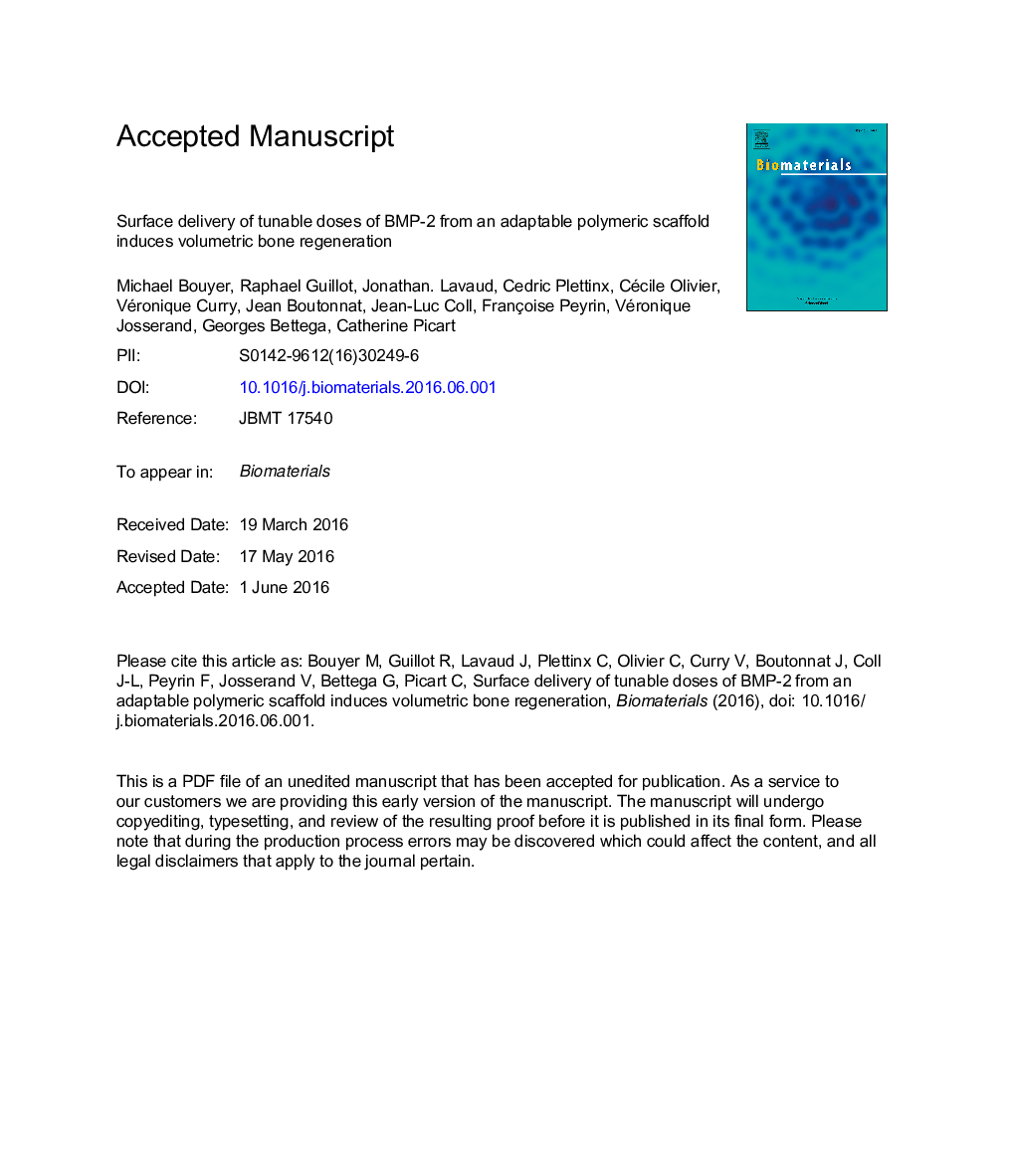| Article ID | Journal | Published Year | Pages | File Type |
|---|---|---|---|---|
| 6484824 | Biomaterials | 2016 | 45 Pages |
Abstract
The rapid and effective bone regeneration of large non-healing defects remains challenging. Bioactive proteins, such as bone morphogenetic protein (BMP)-2, are proved their osteoinductivity, but their clinical use is currently limited to collagen as biomaterial. Being able to deliver BMP-2 from any other biomaterial would broaden its clinical use. This work presents a novel means for repairing a critical size volumetric bone femoral defect in the rat by combining a osteoinductive surface coating (2D) to a polymeric scaffold (3D hollow tube) made of commercially-available PLGA. Using a polyelectrolyte film as BMP-2 carrier, we tune the amount of BMP-2 loaded in and released from the polyelectrolyte film coating over a large extent by controlling the film crosslinking level and initial concentration of BMP-2 in solution. Using microcomputed tomography and quantitative analysis of the regenerated bone growth kinetics, we show that the amount of newly formed bone and kinetics can be modulated: an effective and fast repair was obtained in 1-2 weeks in the best conditions, including complete defect bridging, formation of vascularized and mineralized bone tissue. Histological staining and high-resolution computed tomography revealed the presence of bone regeneration inside and around the tube with spatially distinct organization for trabecular-like and cortical bones. The amount of cortical bone and its thickness increased with the BMP-2 dose. In view of the recent developments in additive manufacturing techniques, this surface-coating technology may be applied in combination with various types of polymeric or metallic scaffolds to offer new perspectives of bone regeneration in personalized medicine.
Related Topics
Physical Sciences and Engineering
Chemical Engineering
Bioengineering
Authors
Michael Bouyer, Raphael Guillot, Jonathan Lavaud, Cedric Plettinx, Cécile Olivier, Véronique Curry, Jean Boutonnat, Jean-Luc Coll, Françoise Peyrin, Véronique Josserand, Georges Bettega, Catherine Picart,
